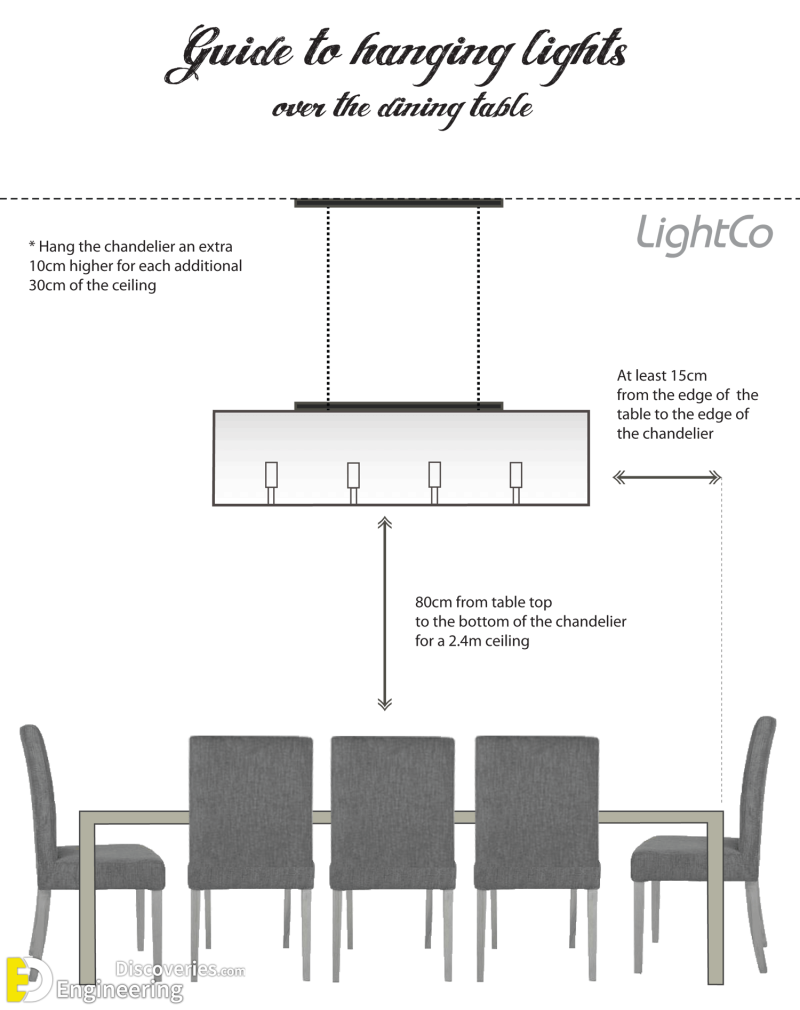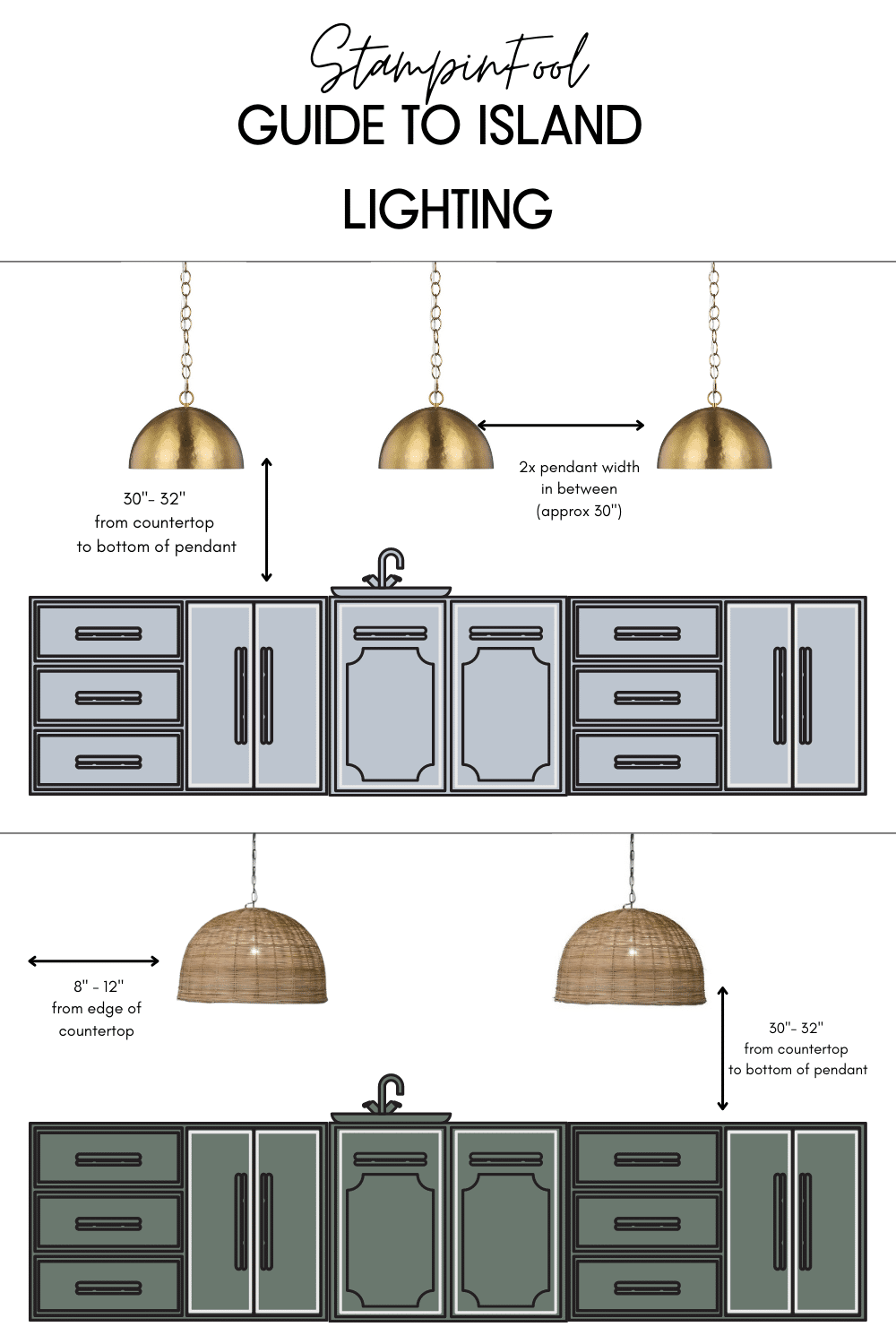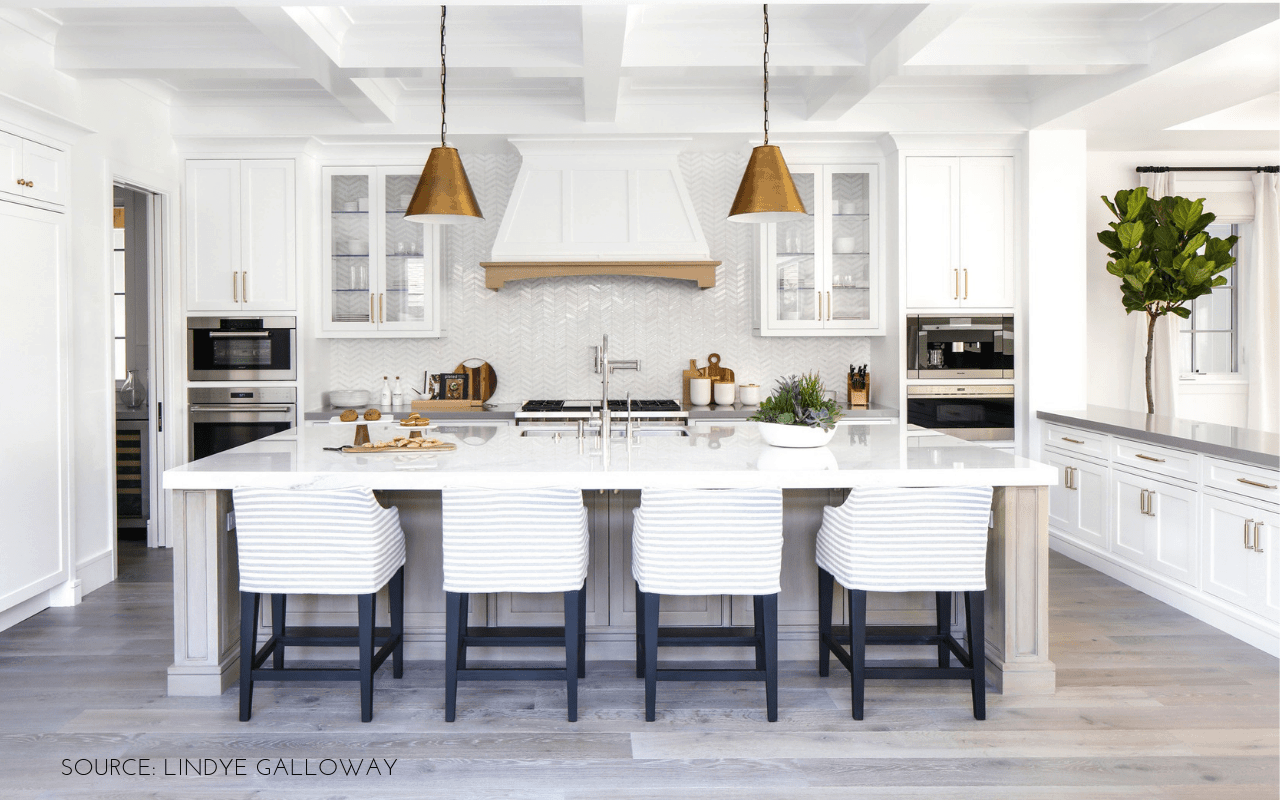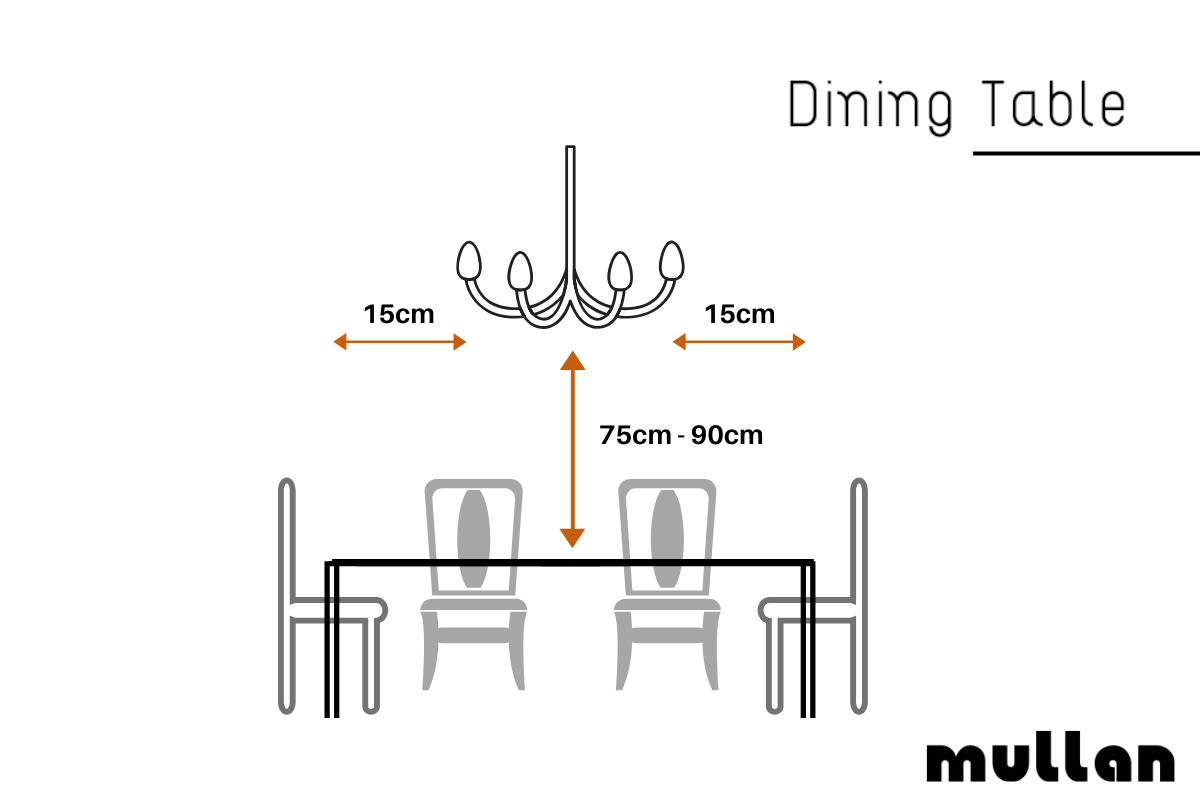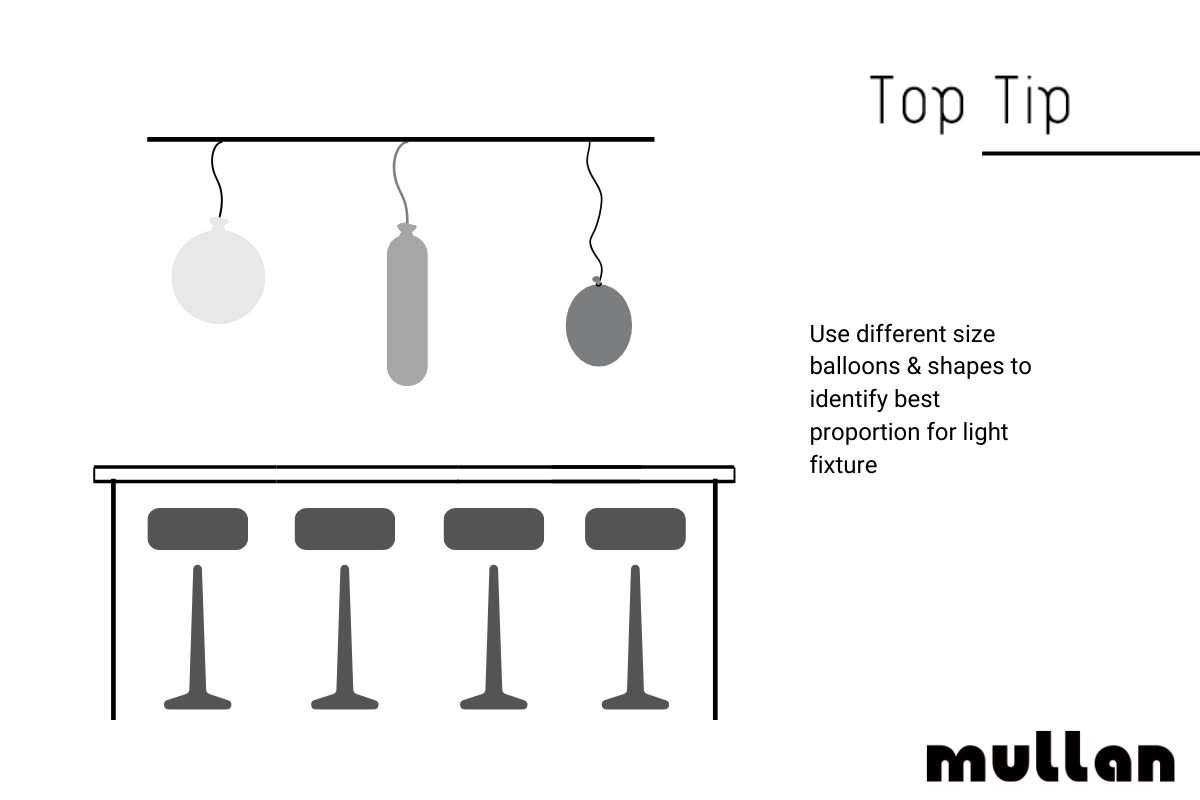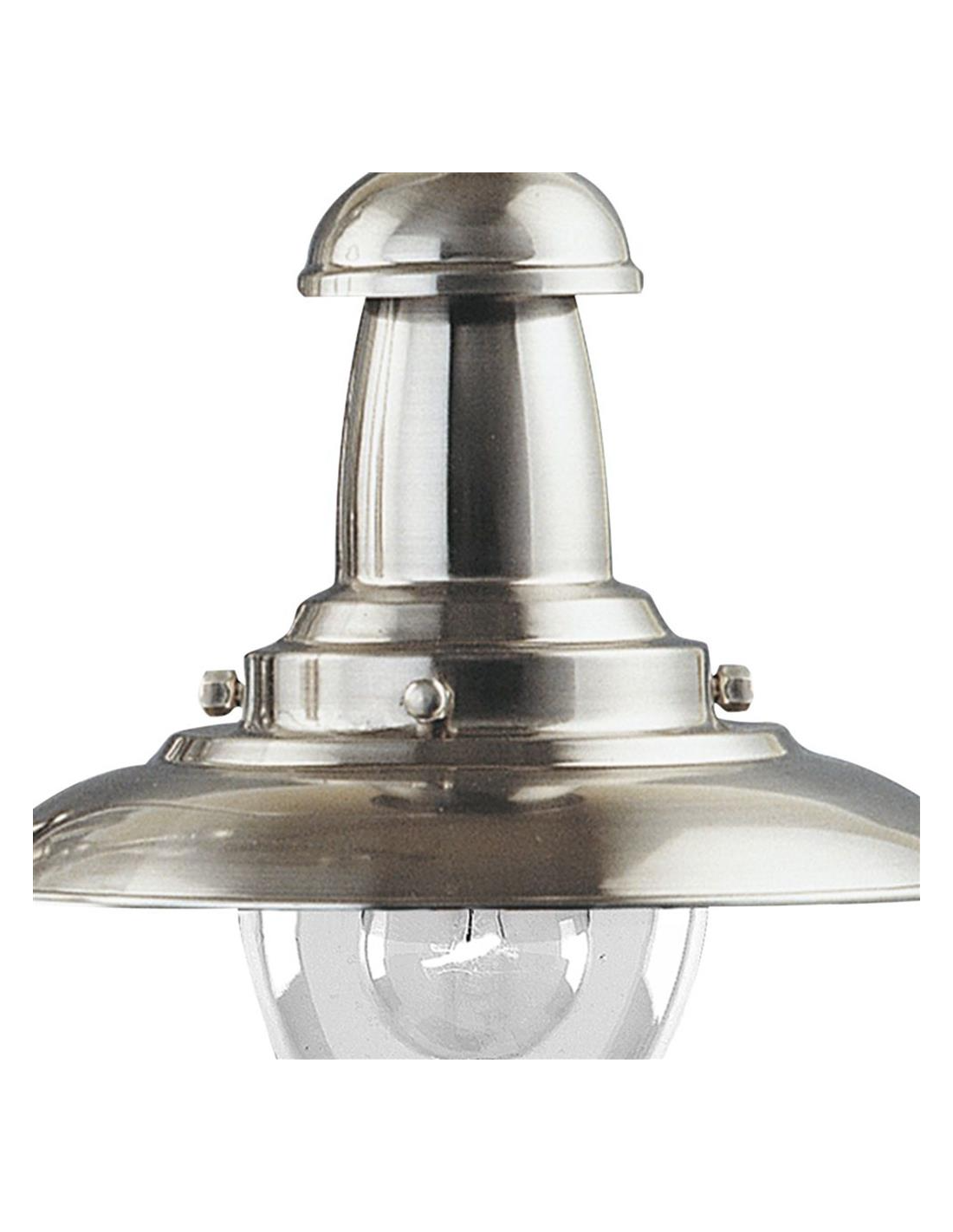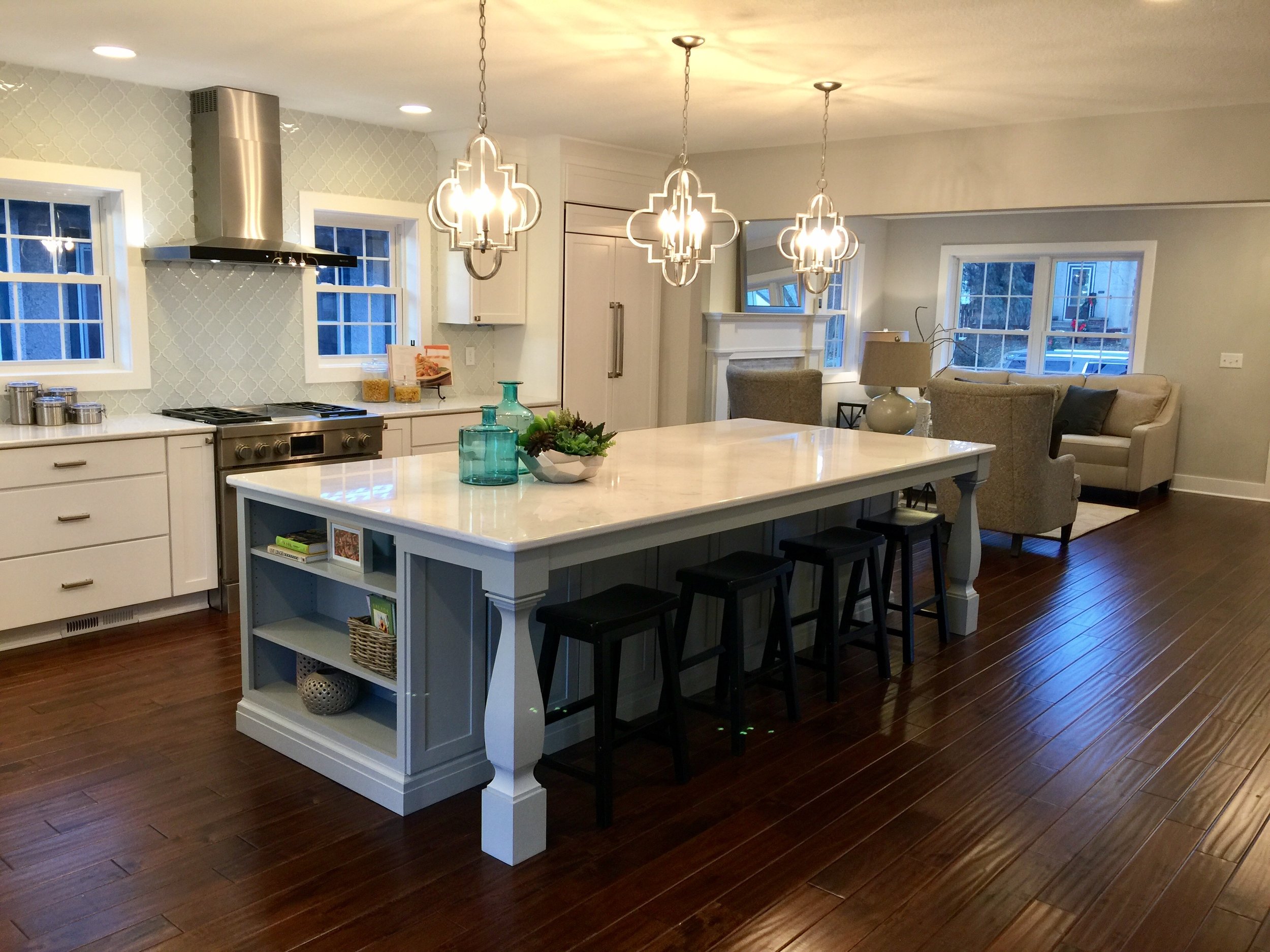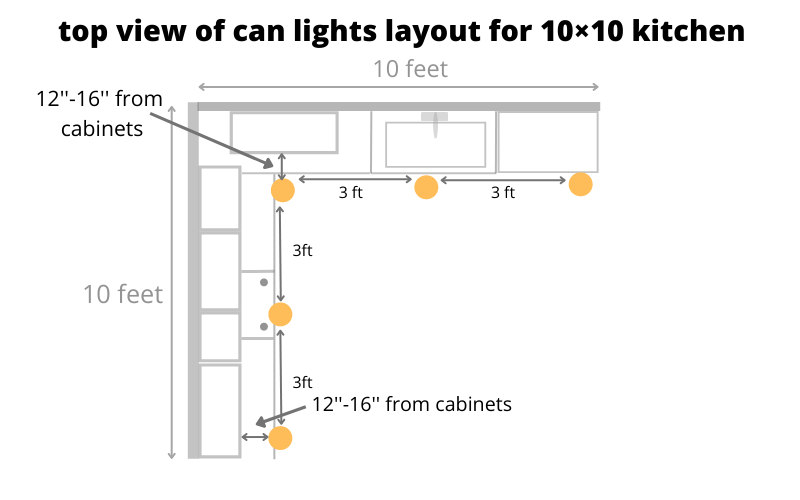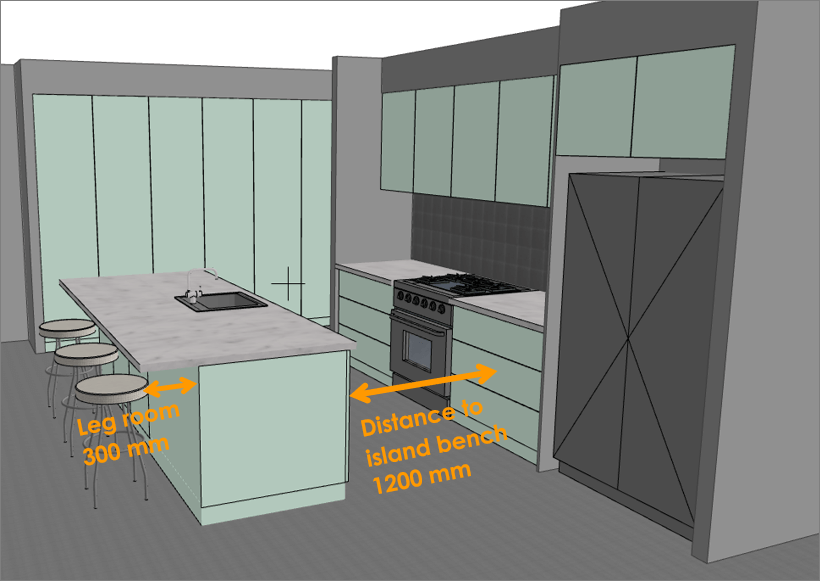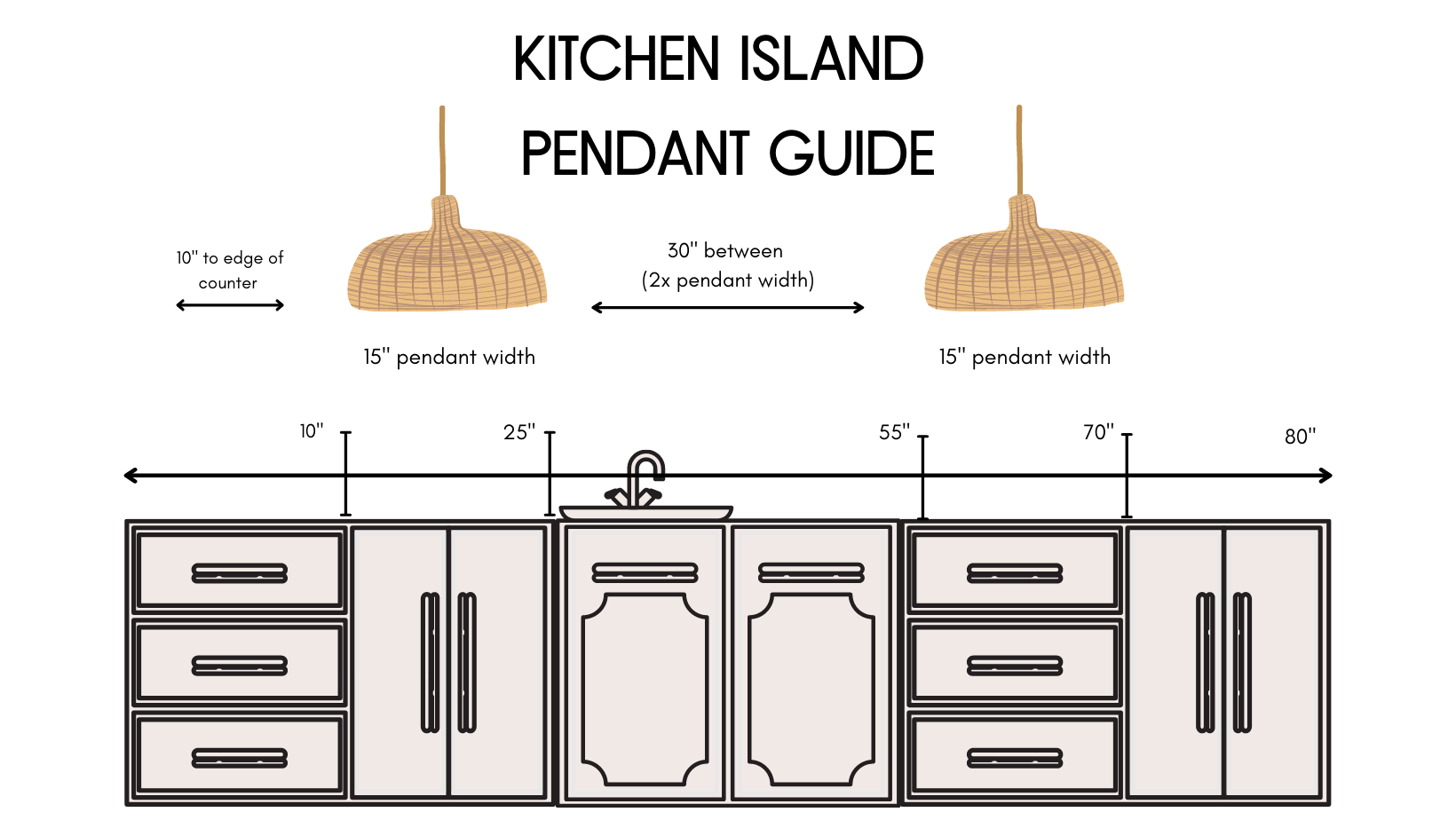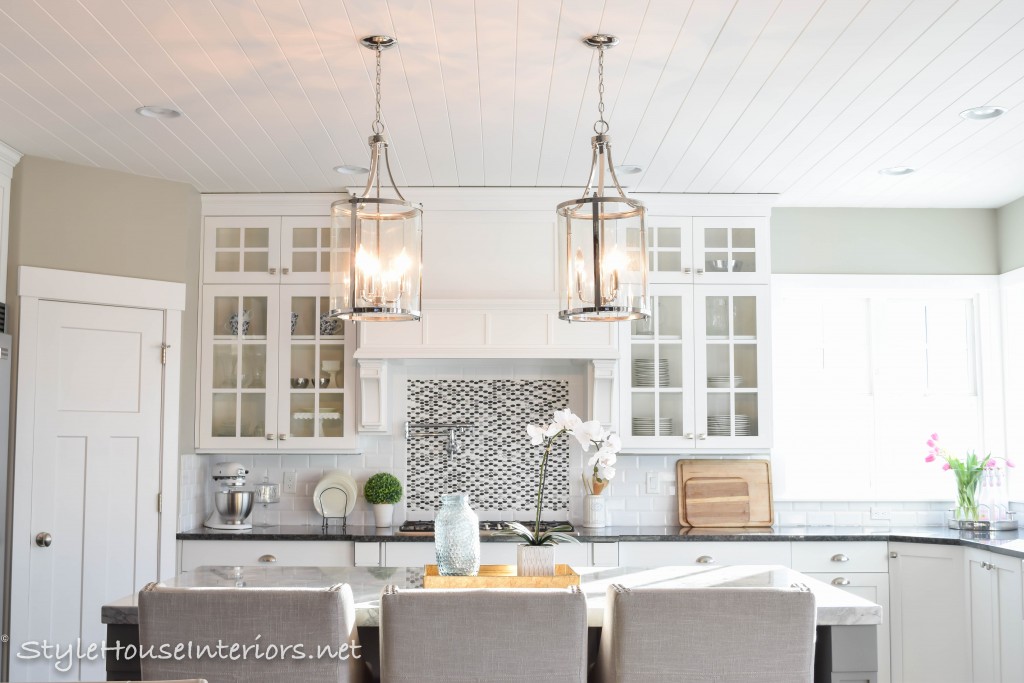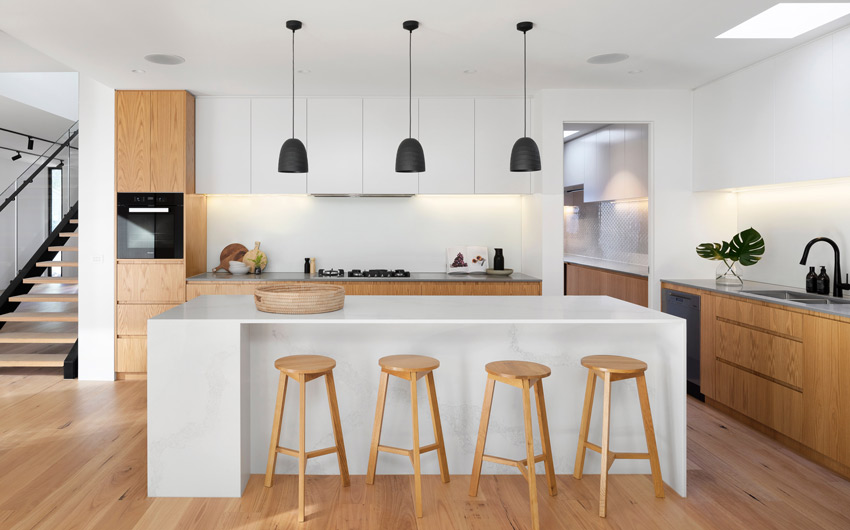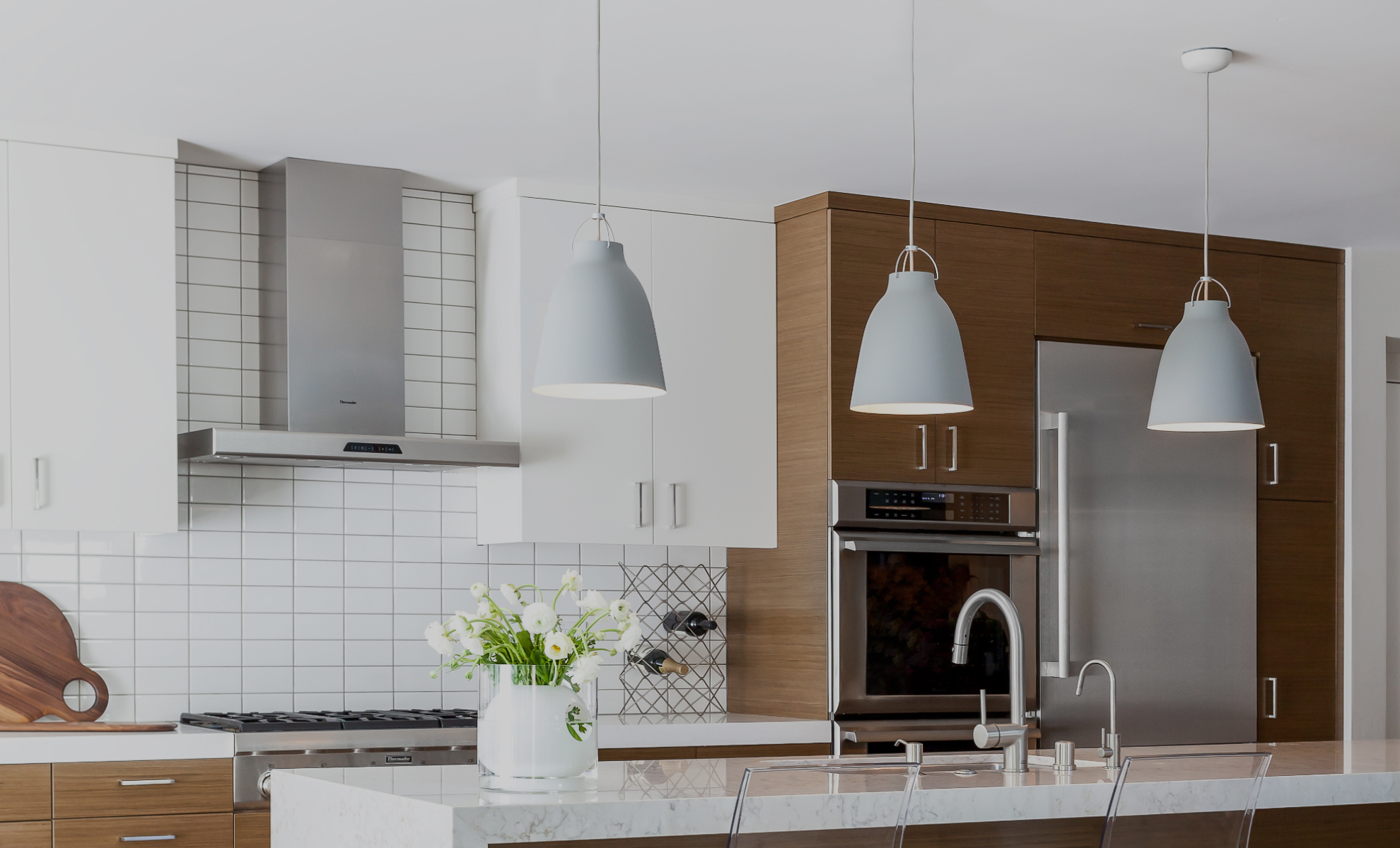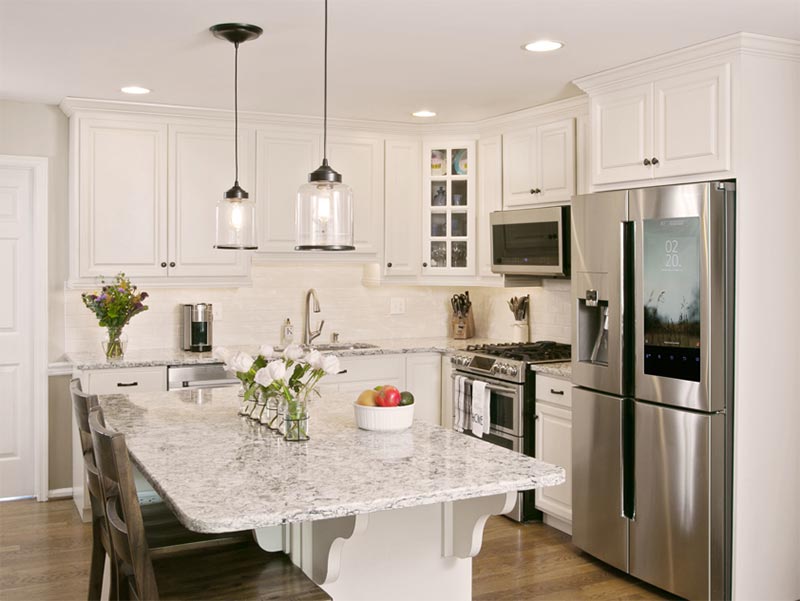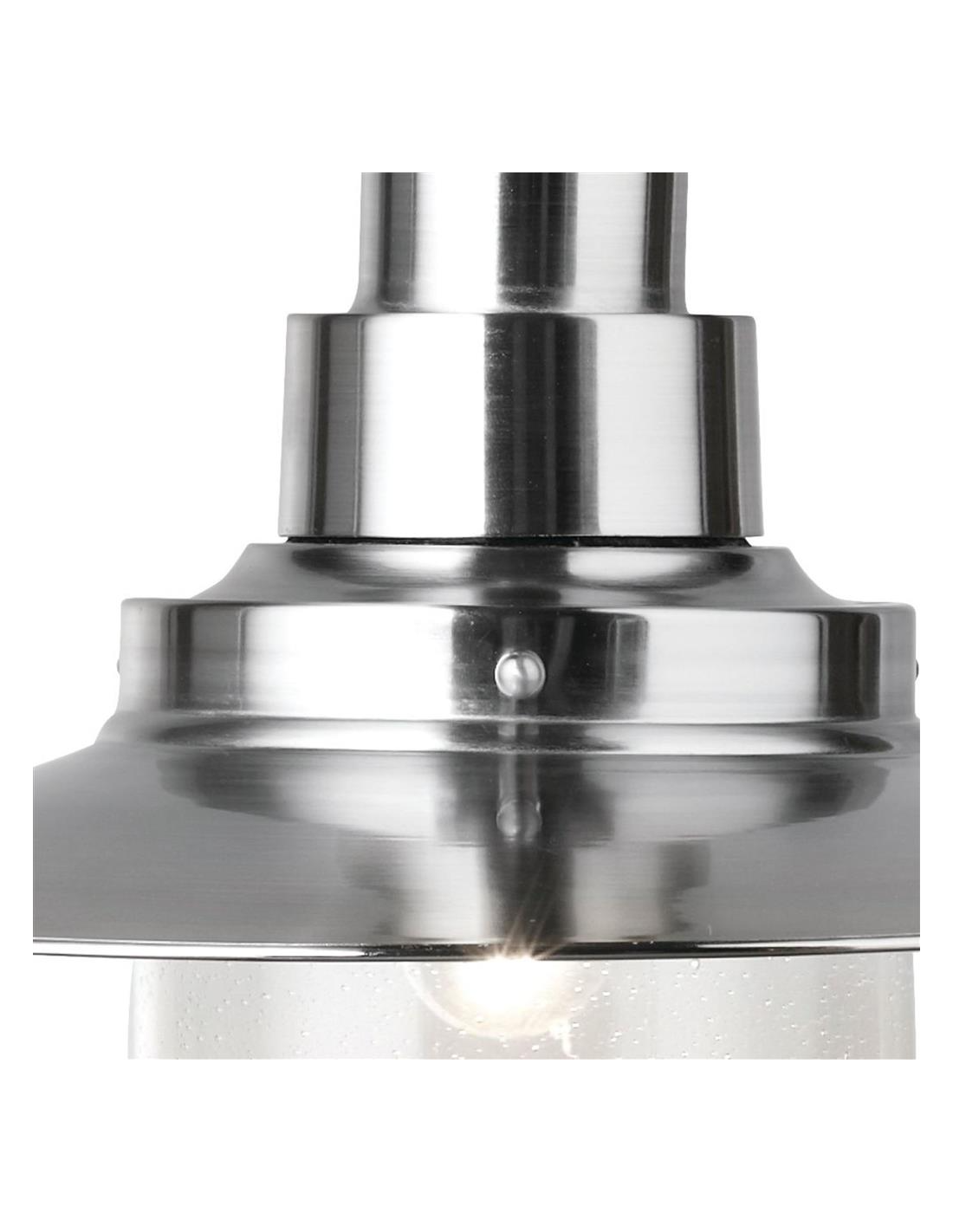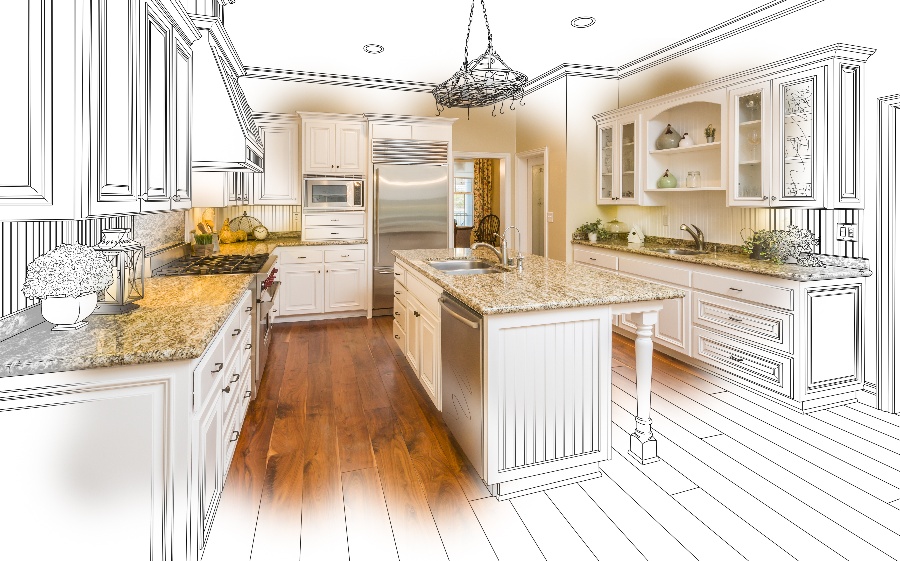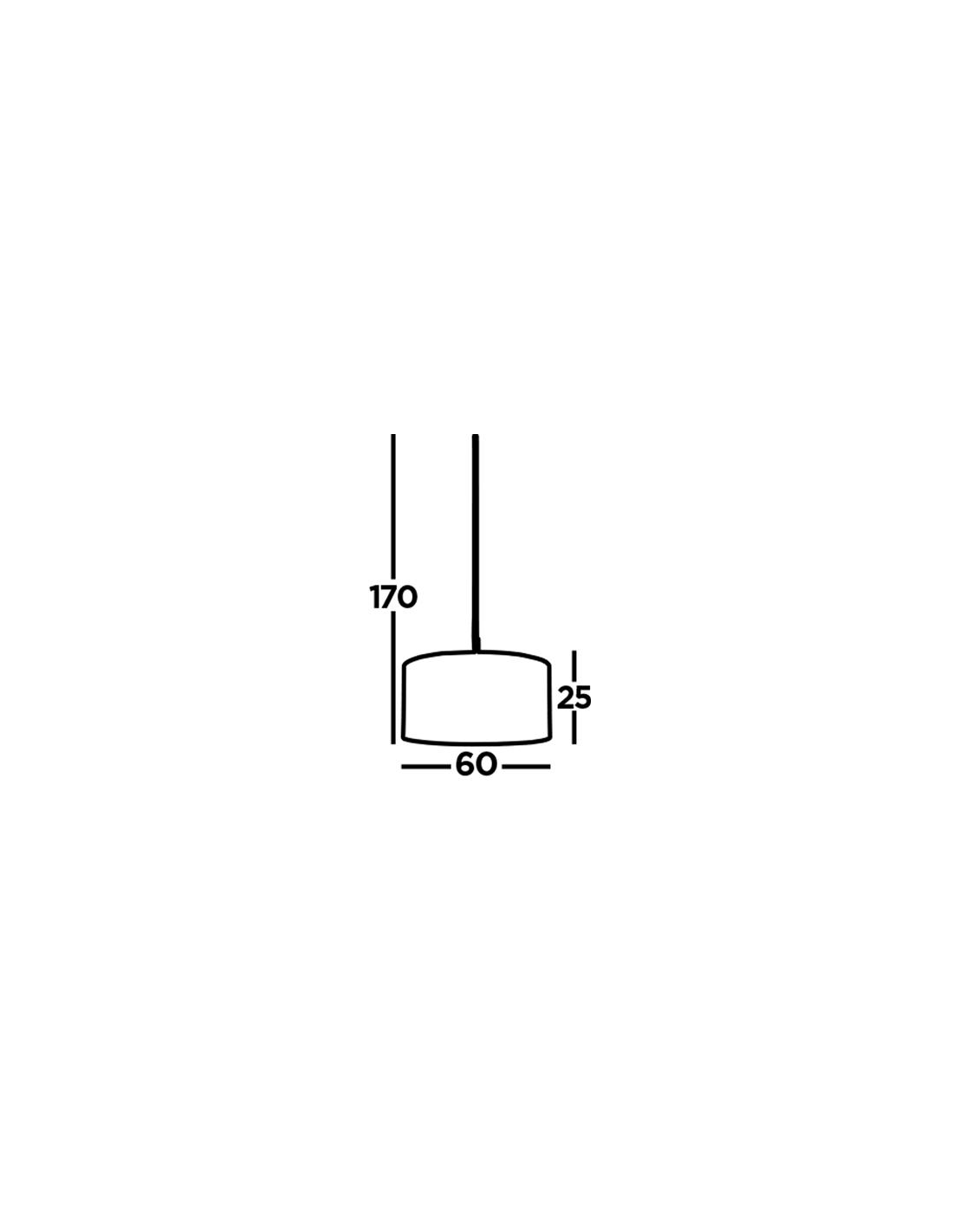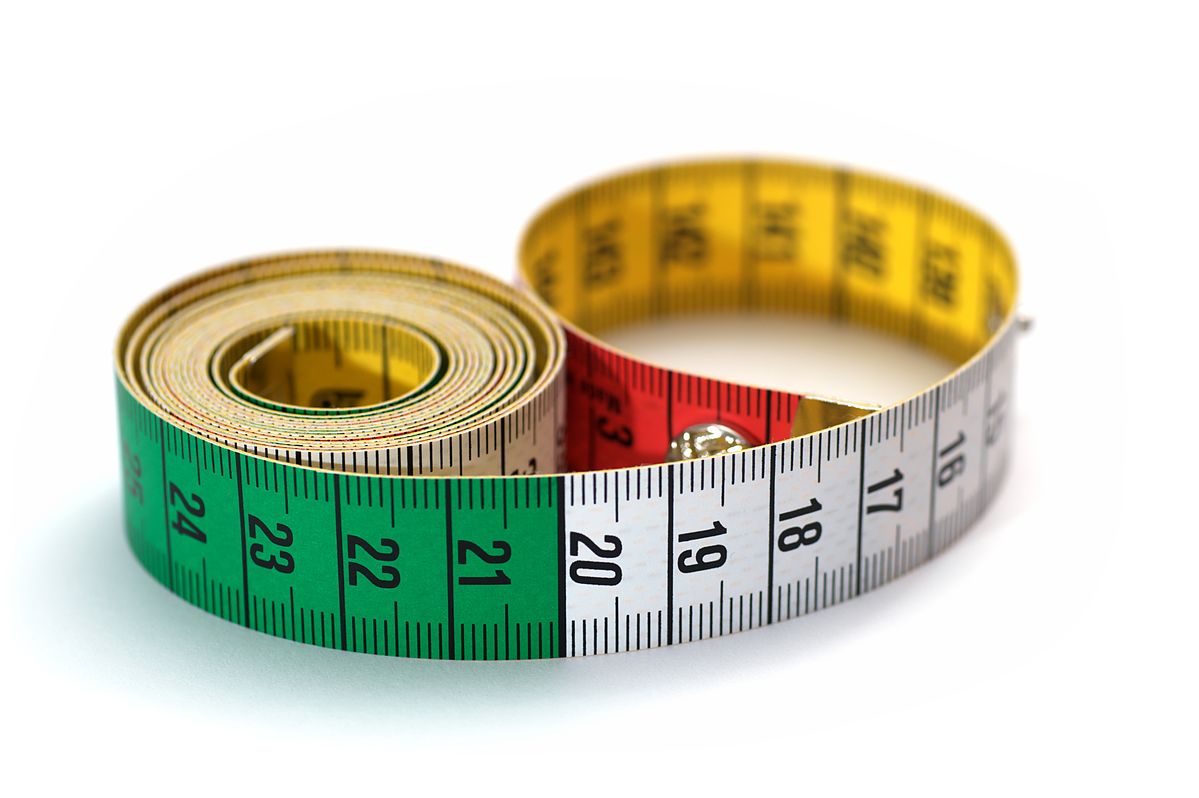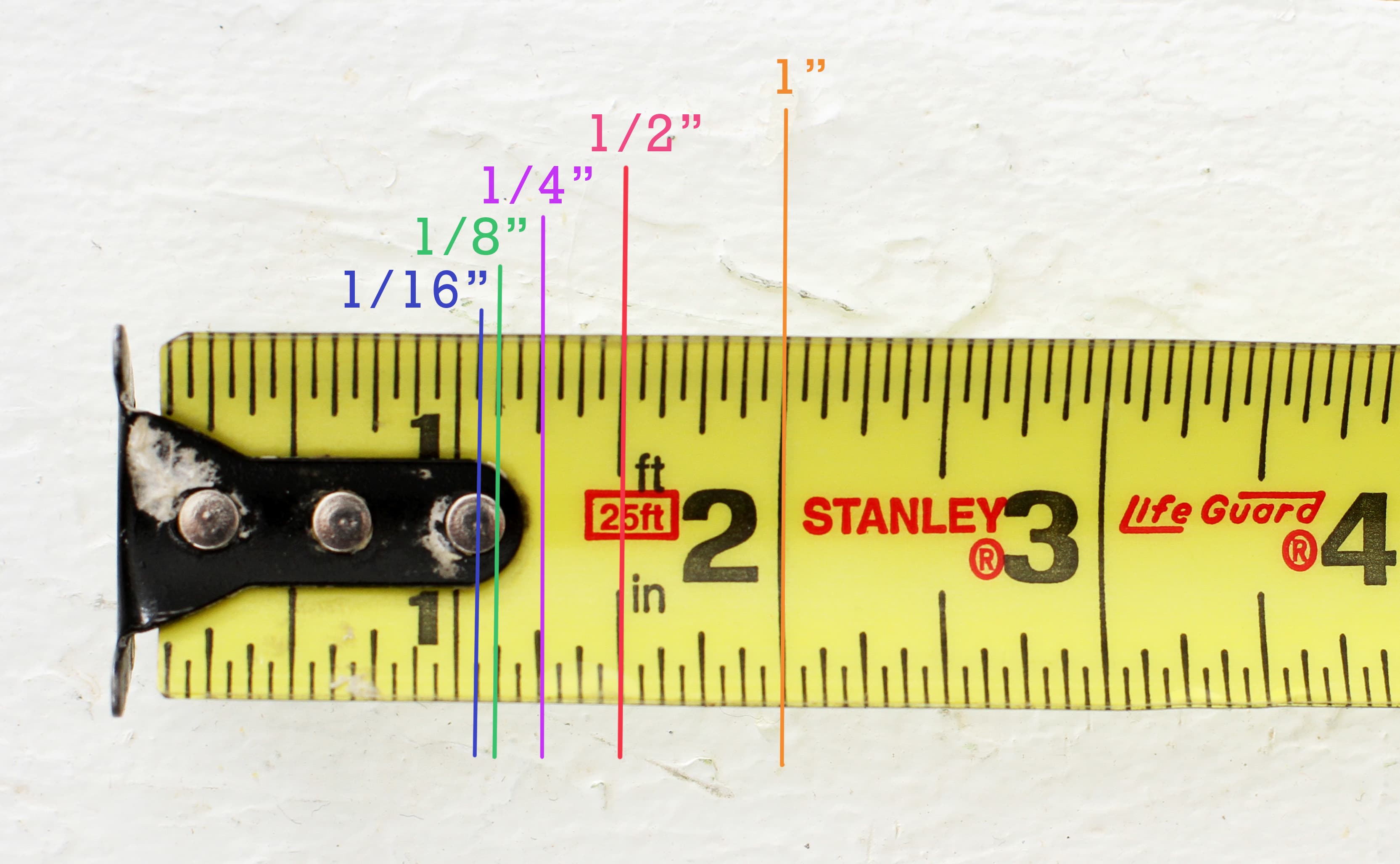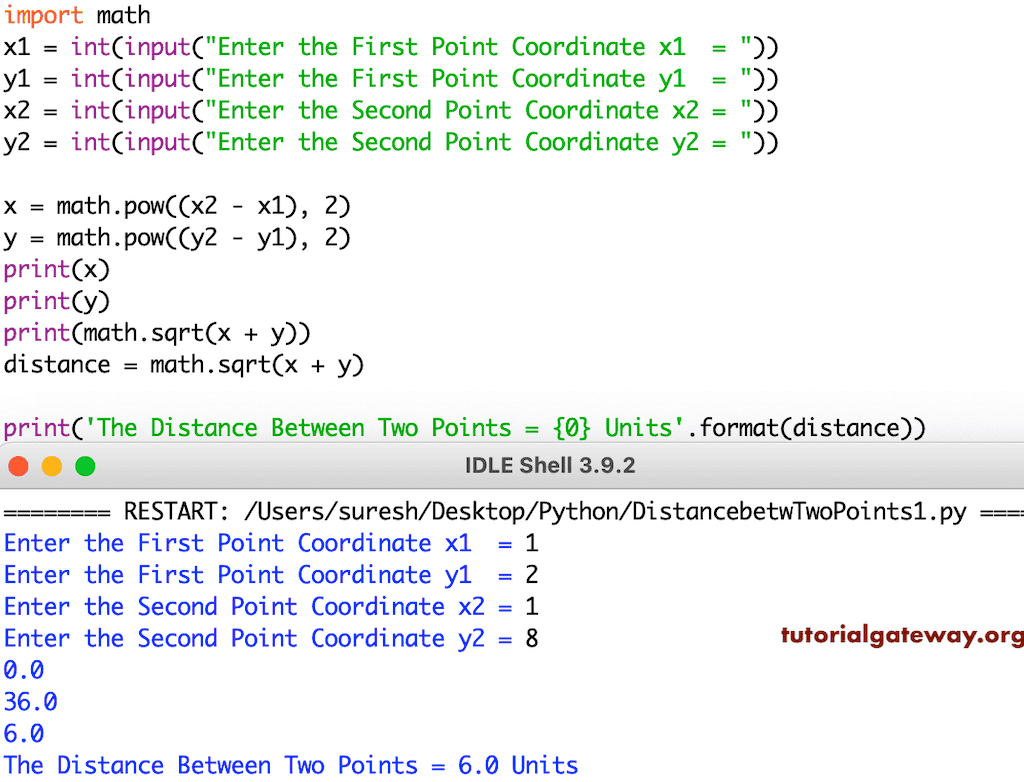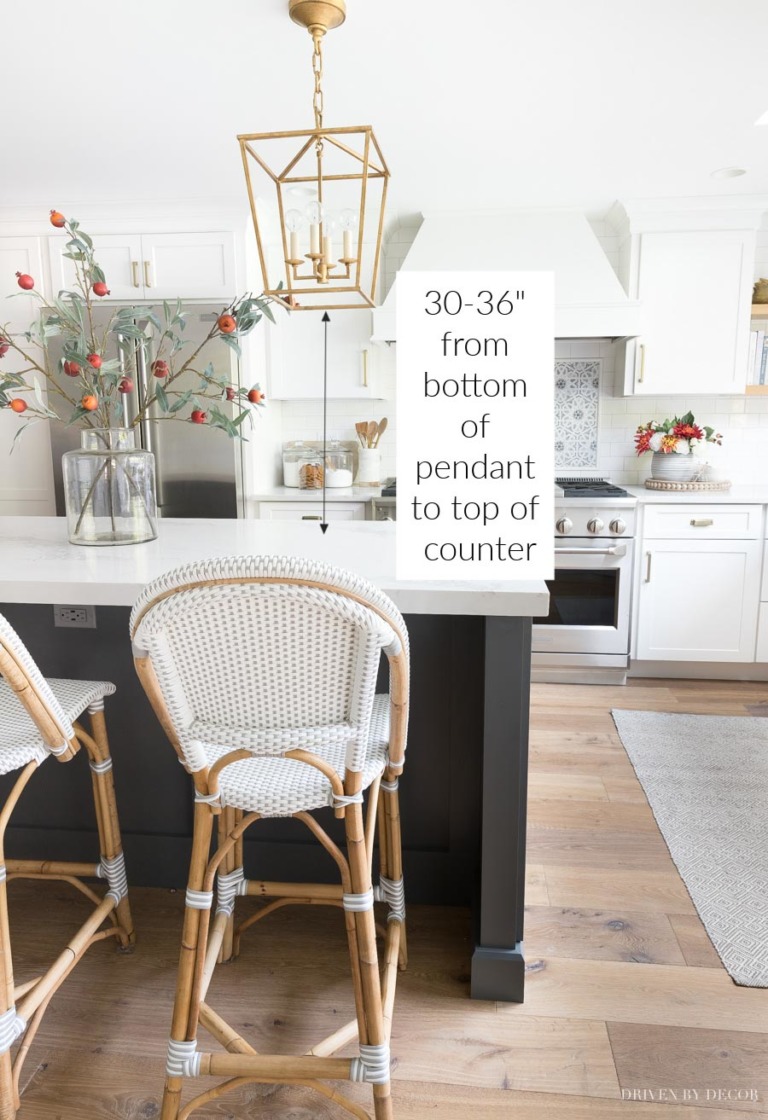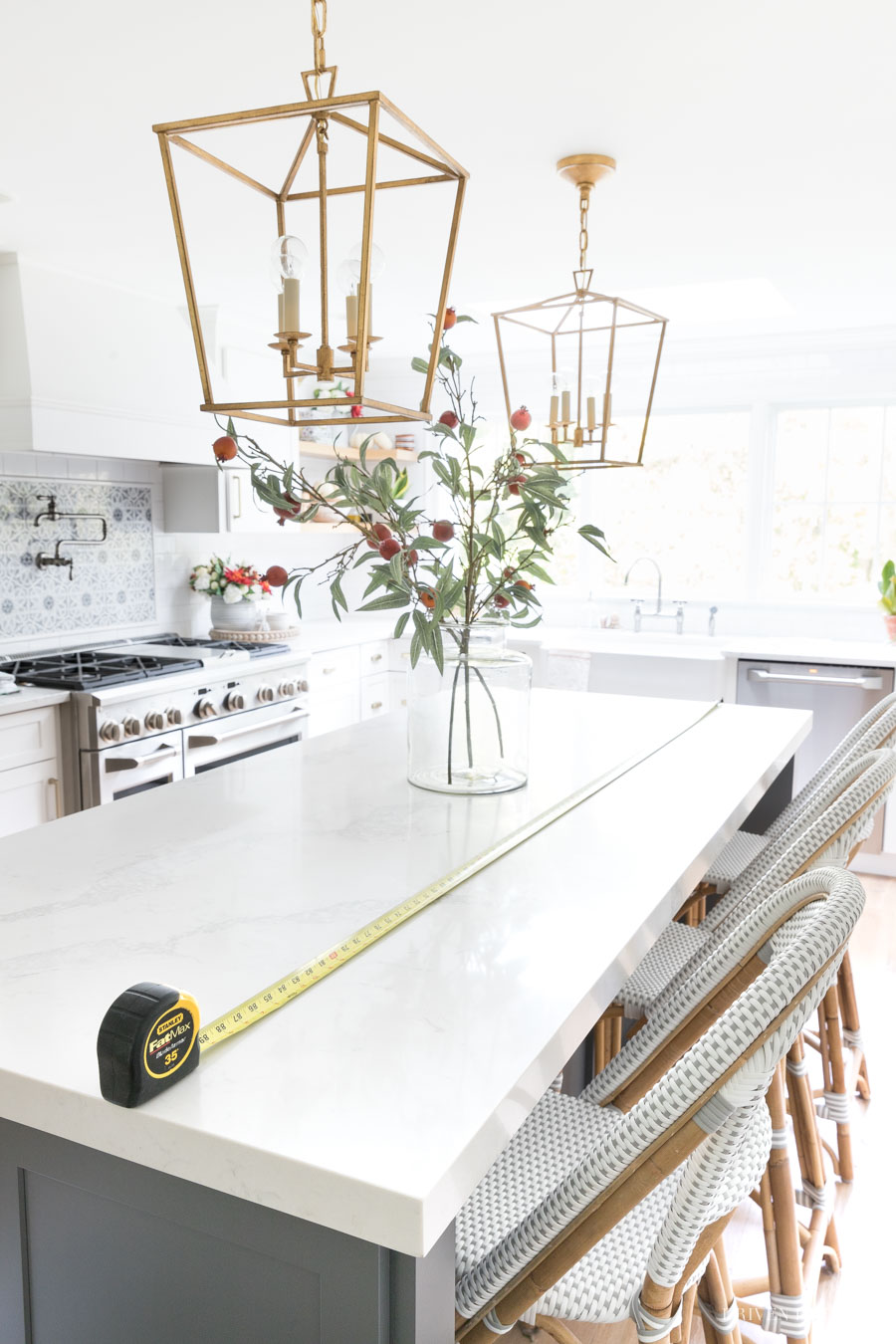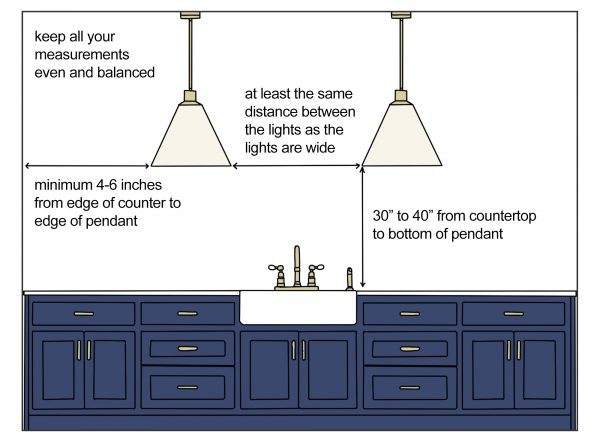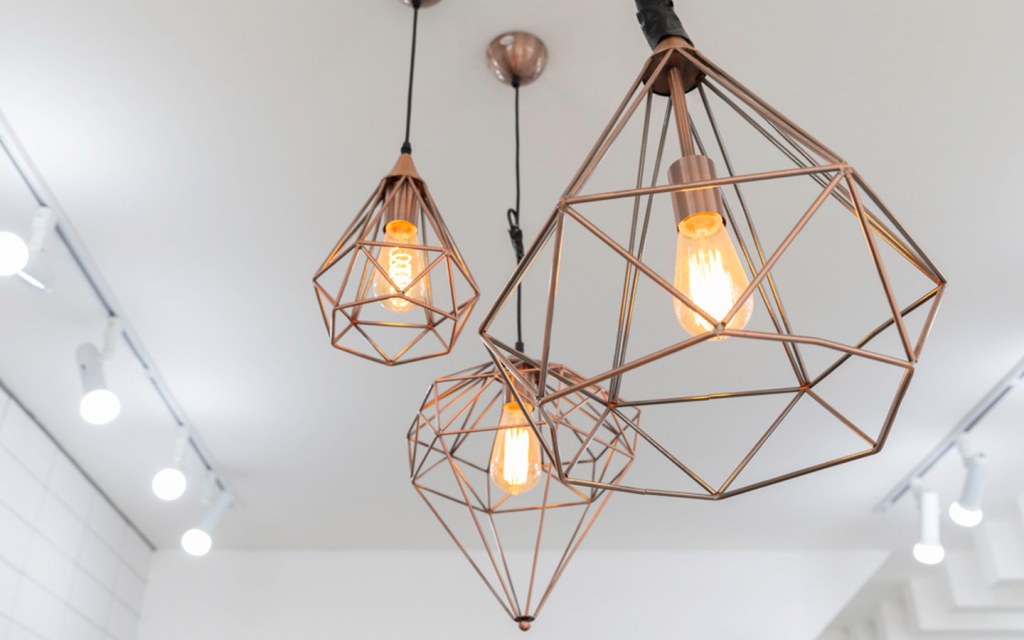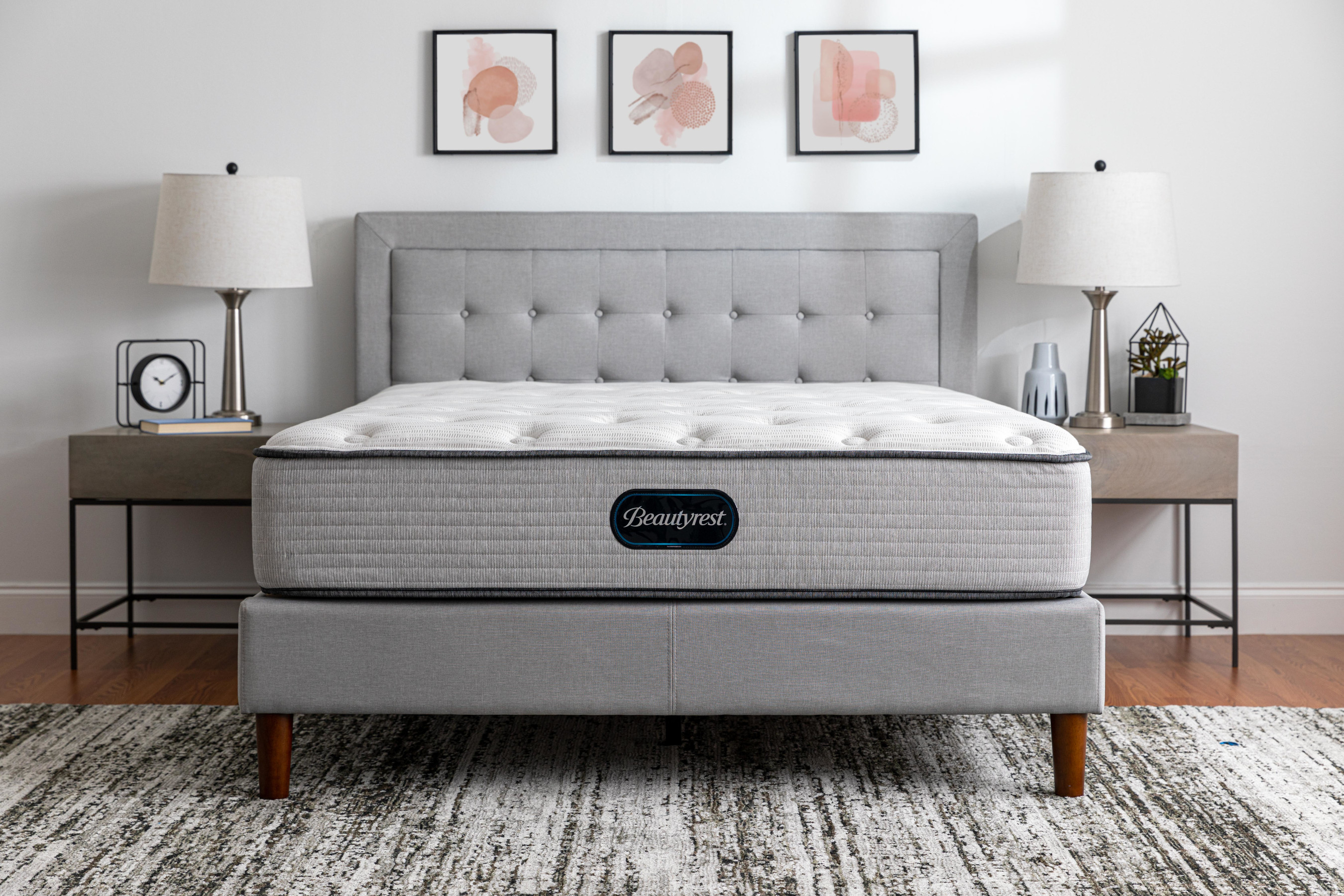Kitchen pendant lights are a popular choice for adding both style and functionality to a kitchen. These hanging lights can provide task lighting over a kitchen island or dining table, as well as serve as a decorative element in the overall design of the space. However, it's important to consider the distance between kitchen pendant lights to ensure proper lighting and avoid any potential hazards. Here are some tips on measuring and determining the ideal distance for your kitchen pendant lights.How to Measure the Distance Between Kitchen Pendant Lights
The ideal distance between kitchen pendant lights will depend on several factors, such as the size and shape of the lights, the height of your ceiling, and the purpose of the lights. Generally, the distance between pendant lights should be around 24-30 inches, with 30-36 inches between the pendant lights and any surrounding walls or cabinets. This will provide enough space for both lighting and movement in the kitchen.Calculating the Optimal Distance for Kitchen Pendant Lights
When determining the spacing for your kitchen pendant lights, it's important to take into account the size and shape of the lights. If you have smaller pendant lights, you can space them closer together, while larger lights may require more distance between them. Additionally, the purpose of the lights should also be considered. If you're using pendant lights for task lighting, you may want them closer together, while for decorative purposes, you can space them further apart.Determining the Ideal Spacing for Kitchen Pendant Lights
When hanging your kitchen pendant lights, it's important to consider the overall design and layout of your kitchen. For example, if you have a long kitchen island, you may want to hang multiple pendant lights along its length. To determine the distance between these lights, you can use the 24-30 inch guideline mentioned earlier. However, if you have a smaller kitchen island or dining table, you may only need one pendant light, which should be centered above the island or table.Tips for Hanging Kitchen Pendant Lights at the Right Distance
If you are planning to install multiple pendant lights in your kitchen, you may be wondering how to measure the distance between them. One way to do this is to use a measuring tape and mark the desired distance on the ceiling. Another method is to measure the length of your kitchen island or table and divide it by the number of pendant lights you plan on hanging. This will give you the approximate distance between each light.Measuring the Distance Between Multiple Kitchen Pendant Lights
Aside from the size and shape of your pendant lights, there are other factors that may affect the distance between them. These include the height of your ceiling and the type of lighting. For lower ceilings, you may need to hang the lights closer together to avoid them looking too cluttered. For higher ceilings, you can space them further apart to create a more dramatic effect. In terms of lighting, if your pendant lights have a narrow beam, you may need to space them closer together to ensure adequate lighting coverage.Factors to Consider When Determining the Distance Between Kitchen Pendant Lights
When measuring the distance between kitchen pendant lights, using a tape measure is the most accurate method. Start by measuring the length of the area where you want to hang the lights, whether it's a kitchen island or dining table. Then, divide this length by the number of pendant lights you plan on hanging. This will give you the distance between each light. You can also use a tape measure to mark the spots on the ceiling where you want to hang the lights, to ensure they are evenly spaced.Using a Tape Measure to Find the Distance Between Kitchen Pendant Lights
As mentioned earlier, the height of your ceiling can affect the distance between kitchen pendant lights. For every foot of ceiling height, it's recommended to have 3 inches of distance between the lights. For example, if you have a 10-foot ceiling, the distance between pendant lights should be around 30 inches. This will ensure that the lights are not too close to the ceiling or too far apart.Calculating the Distance Between Kitchen Pendant Lights Based on Ceiling Height
If you plan on using different types of lighting for your kitchen pendant lights, such as dimmable or adjustable lights, you may need to adjust the distance between them accordingly. For example, if you have dimmable lights, you may want them closer together to create a brighter effect when needed. If you have adjustable lights, you can space them further apart to allow for more versatility in the lighting options.Adjusting the Distance Between Kitchen Pendant Lights for Different Types of Lighting
When it comes to measuring the distance between kitchen pendant lights, there are a few common mistakes that you should avoid. One of the most common mistakes is not taking into account the height of your ceiling, which can greatly affect the spacing of the lights. Another mistake is not considering the purpose of the lights, whether they are for task lighting or decoration. Finally, be sure to measure and mark the desired distance accurately to avoid any potential errors.Common Mistakes to Avoid When Measuring the Distance Between Kitchen Pendant Lights
The Importance of Properly Spacing Kitchen Pendant Lights
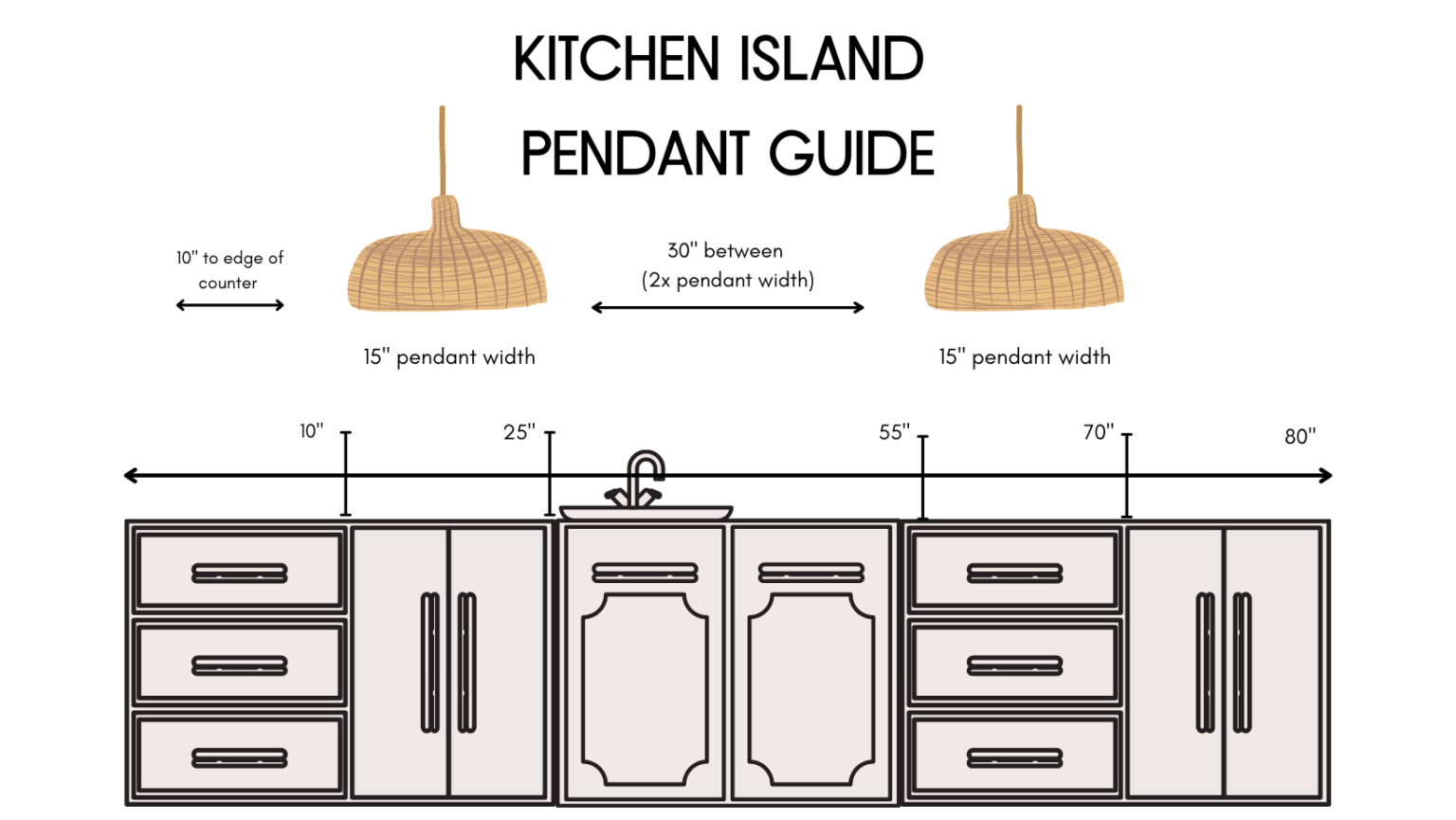
Maximizing Functionality and Aesthetics
 When designing a kitchen, it is important to consider not only the functional aspects but also the aesthetic appeal.
Kitchen pendant lights
are a popular choice for adding both functionality and style to the kitchen. These lights not only provide task lighting for cooking and food preparation, but they also serve as a decorative element, adding character and warmth to the space. However, in order to fully reap the benefits of these lights, proper spacing is crucial.
When designing a kitchen, it is important to consider not only the functional aspects but also the aesthetic appeal.
Kitchen pendant lights
are a popular choice for adding both functionality and style to the kitchen. These lights not only provide task lighting for cooking and food preparation, but they also serve as a decorative element, adding character and warmth to the space. However, in order to fully reap the benefits of these lights, proper spacing is crucial.
Ensuring Adequate Illumination
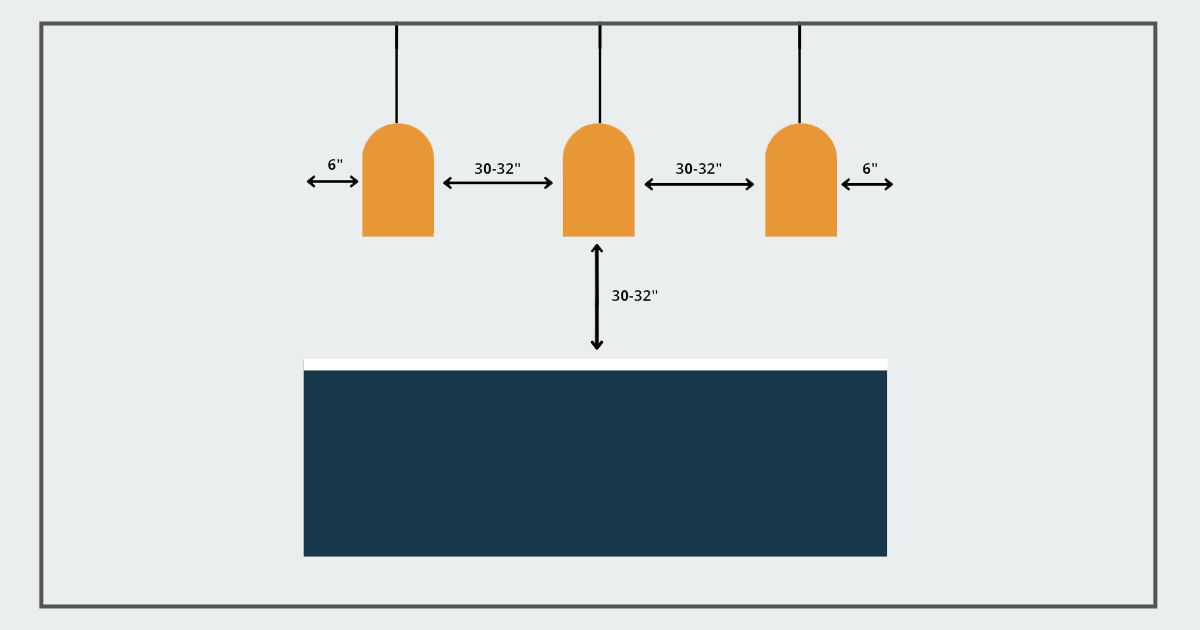 One of the main purposes of kitchen pendant lights is to provide adequate lighting for the tasks performed in the kitchen.
Distance between kitchen pendant lights
plays a crucial role in achieving this goal. If the lights are too far apart, there will be dark spots in the kitchen, making it difficult to see while cooking or working at the countertops. On the other hand, if the lights are too close together, there will be an excessive amount of light, creating a harsh and uncomfortable environment. Therefore, finding the right balance and spacing is essential.
One of the main purposes of kitchen pendant lights is to provide adequate lighting for the tasks performed in the kitchen.
Distance between kitchen pendant lights
plays a crucial role in achieving this goal. If the lights are too far apart, there will be dark spots in the kitchen, making it difficult to see while cooking or working at the countertops. On the other hand, if the lights are too close together, there will be an excessive amount of light, creating a harsh and uncomfortable environment. Therefore, finding the right balance and spacing is essential.
Creating Visual Balance
 In addition to functionality, proper spacing also contributes to the overall visual balance of the kitchen.
Kitchen pendant lights
can serve as a focal point in the space, drawing the eye and adding visual interest. However, if they are not spaced evenly, it can create a lopsided or cluttered appearance. On the other hand, evenly spaced lights can create a sense of symmetry and harmony, making the kitchen more visually appealing.
In addition to functionality, proper spacing also contributes to the overall visual balance of the kitchen.
Kitchen pendant lights
can serve as a focal point in the space, drawing the eye and adding visual interest. However, if they are not spaced evenly, it can create a lopsided or cluttered appearance. On the other hand, evenly spaced lights can create a sense of symmetry and harmony, making the kitchen more visually appealing.
Factors to Consider
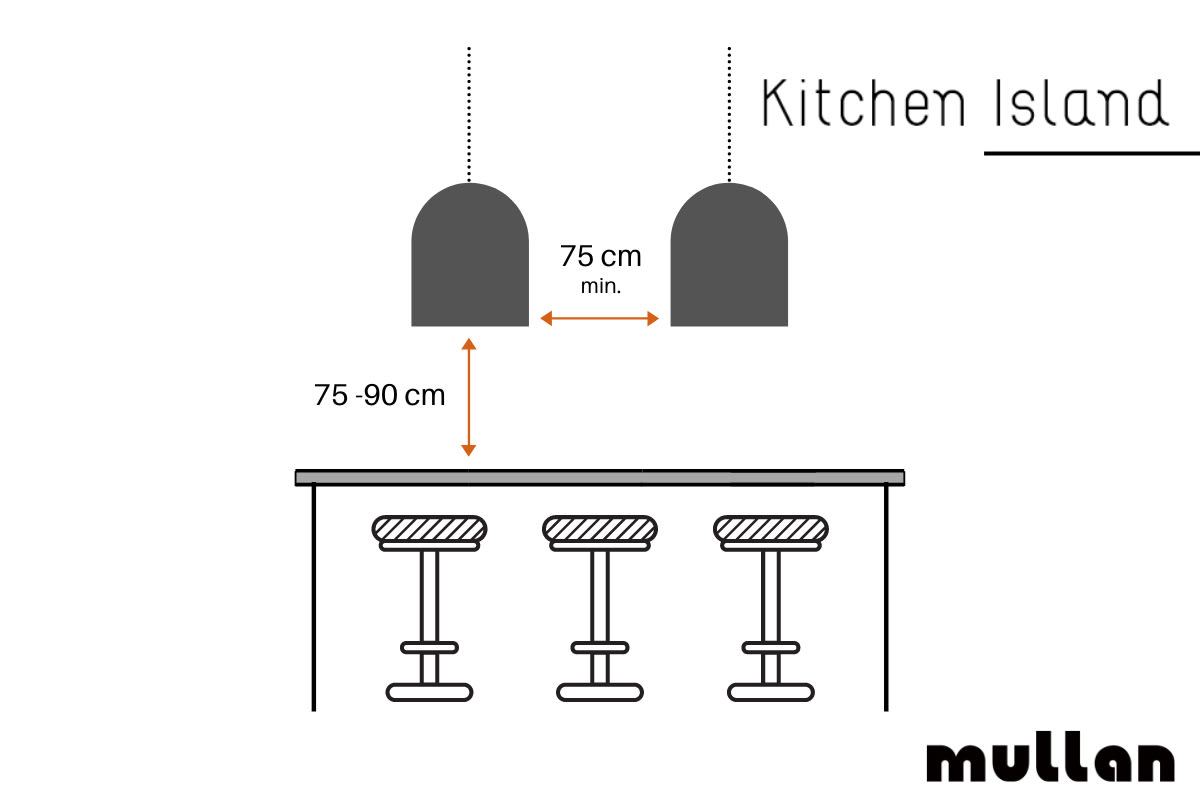 When determining the distance between kitchen pendant lights, there are a few factors to consider. The size and layout of the kitchen, as well as the height of the ceiling, should all be taken into account. As a general rule, the lights should be spaced 30-36 inches apart and hung 28-34 inches above the countertops. However, this can vary depending on the size and shape of the kitchen.
In conclusion
, proper spacing of kitchen pendant lights is crucial for both functionality and aesthetics. It not only ensures adequate illumination for tasks, but also contributes to the overall visual balance of the kitchen. By considering factors such as kitchen size and layout, and following a general guideline for spacing, you can achieve the perfect balance of form and function in your kitchen design.
When determining the distance between kitchen pendant lights, there are a few factors to consider. The size and layout of the kitchen, as well as the height of the ceiling, should all be taken into account. As a general rule, the lights should be spaced 30-36 inches apart and hung 28-34 inches above the countertops. However, this can vary depending on the size and shape of the kitchen.
In conclusion
, proper spacing of kitchen pendant lights is crucial for both functionality and aesthetics. It not only ensures adequate illumination for tasks, but also contributes to the overall visual balance of the kitchen. By considering factors such as kitchen size and layout, and following a general guideline for spacing, you can achieve the perfect balance of form and function in your kitchen design.

